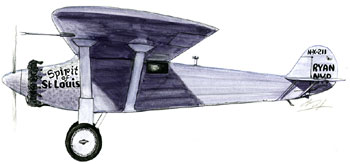|
Abel Santamaría
Abel Santamaría Cuadrado (20 October 1927 – 26 July 1953) was a Cuban revolutionary and leader in the Cuban Revolutionary movement. He and his sister Haydée Santamaría participated in the failed attack on the Moncada Barracks led by Fidel Castro, during which he was captured and subsequently killed in prison. Biography Abel was born in Encrucijada, Las Villas, Cuba. He and his sister Haydée allowed revolutionaries including Fidel Castro to use their tiny two-room apartment on the corner of O and 25th streets in Havana for planning the revolution. Abel and Haydee participated in the Moncada barracks assault in July 1953 that was intended to start the revolutionary overthrow of Cuban dictator Fulgencio Batista. Fidel Castro assigned Santamaria with the mission of taking the Saturnino Lora Hospital as part of the assault. Santamaria initially objected with the thought that Castro was taking on the more dangerous mission, stating "you are most needed by everyone". Castro ... [...More Info...] [...Related Items...] OR: [Wikipedia] [Google] [Baidu] |
Constancia, Cuba
Abel Santamaria also known as Constancia and is a ward (consejo popular) and a town in Encrucijada, Villa Clara Province, Cuba Cuba, officially the Republic of Cuba, is an island country, comprising the island of Cuba (largest island), Isla de la Juventud, and List of islands of Cuba, 4,195 islands, islets and cays surrounding the main island. It is located where the .... It’s the birthplace of Abel Santamaría, a Cuban revolutionary that fought for the 26th of July Movement and his sister Haydée Santamaría. Geography Towns in Abel Santamaría’s ward are: * Canoa * Tuinicú * Paso Real * Raizúa * Castaño * Las Mercedes * Progreso * Cayo Hueso * Guadalupe * Congojas Abel Santamaria is south of La Sierra and El Purio. It is north of Santa Clara Municipality. To the east is the Sagua la Chica River and its west is Encrucijada Sur. Education Schools in Constancia include: * Boris Luis Santa Coloma Primary School * CI Sueños de Abel * Mariana Grajales R ... [...More Info...] [...Related Items...] OR: [Wikipedia] [Google] [Baidu] |
Museo Abel Santamaría Cuadrado
Museo Abel Santamaría Cuadrado is a museum located in the old Saturnino Lora Hospital, Santiago de Cuba. It was established on July 26, 1973. It holds pictures and documents about 1953 events, the Moncada Barracks assault and the October 16th Fidel Castro trial. It is named after Abel Santamaría Cuadrado. See also * List of museums in Cuba A list is a set of discrete items of information collected and set forth in some format for utility, entertainment, or other purposes. A list may be memorialized in any number of ways, including existing only in the mind of the list-maker, bu ... References Museums in Cuba Buildings and structures in Santiago de Cuba Museums established in 1973 1973 establishments in Cuba 20th-century architecture in Cuba {{cuba-museum-stub ... [...More Info...] [...Related Items...] OR: [Wikipedia] [Google] [Baidu] |
Executed Cuban People
Capital punishment, also known as the death penalty and formerly called judicial homicide, is the state-sanctioned killing of a person as punishment for actual or supposed misconduct. The sentence (law), sentence ordering that an offender be punished in such a manner is called a death sentence, and the act of carrying out the sentence is an execution. A prisoner who has been sentenced to death and awaits execution is ''condemned'' and is commonly referred to as being "on death row". Etymologically, the term ''capital'' (, derived via the Latin ' from ', "head") refers to execution by Decapitation, beheading, but executions are carried out by List of methods of capital punishment, many methods, including hanging, Execution by shooting, shooting, lethal injection, stoning, Electric chair, electrocution, and Gas chamber, gassing. Crimes that are punishable by death are known as ''capital crimes'', ''capital offences'', or ''capital felonies'', and vary depending on the jurisdic ... [...More Info...] [...Related Items...] OR: [Wikipedia] [Google] [Baidu] |
Cuban Socialists
Cuban or Cubans may refer to: Related to Cuba * of or related to Cuba, a country in the Caribbean * Cubans, people from Cuba, or of Cuban descent ** Cuban exile, a person who left Cuba for political reasons, or a descendant thereof * Cuban Americans, citizens of the United States who are of Cuban descent * Cuban Spanish, the dialect of Cuba * Culture of Cuba * Cuban cigar * Cuban cuisine ** Cuban sandwich People with the surname * Brian Cuban (born 1961), American lawyer and activist * Mark Cuban (born 1958), American entrepreneur See also * * Kuban (other) * List of Cubans * Demographics of Cuba * Cuban Boys, a British music act * Cuban eight, a type of aerobatic maneuver * Cuban Missile Crisis * Cubane Cubane is a synthetic hydrocarbon compound with the Chemical formula, formula . It consists of eight carbon atoms arranged at the corners of a Cube (geometry), cube, with one hydrogen atom attached to each carbon atom. A solid crystalline substanc ..., a synthetic hydr ... [...More Info...] [...Related Items...] OR: [Wikipedia] [Google] [Baidu] |
People Of The Cuban Revolution
The term "the people" refers to the public or Common people, common mass of people of a polity. As such it is a concept of human rights law, international law as well as constitutional law, particularly used for claims of popular sovereignty. In contrast, a people is any plurality of Person, persons considered as a whole. Used in politics and law, the term "a people" refers to the collective or community of an ethnic group or nation. Concepts Legal Chapter One, Article One of the Charter of the United Nations states that "peoples" have the right to self-determination. Though the mere status as peoples and the right to self-determination, as for example in the case of Declaration on the Rights of Indigenous Peoples, Indigenous peoples (''peoples'', as in all groups of indigenous people, not merely all indigenous persons as in ''indigenous people''), does not automatically provide for independence, independent sovereignty and therefore secession. Indeed, judge Ivor Jennings i ... [...More Info...] [...Related Items...] OR: [Wikipedia] [Google] [Baidu] |
People From Encrucijada
The term "the people" refers to the public or common mass of people of a polity. As such it is a concept of human rights law, international law as well as constitutional law, particularly used for claims of popular sovereignty. In contrast, a people is any plurality of persons considered as a whole. Used in politics and law, the term "a people" refers to the collective or community of an ethnic group or nation. Concepts Legal Chapter One, Article One of the Charter of the United Nations states that "peoples" have the right to self-determination. Though the mere status as peoples and the right to self-determination, as for example in the case of Indigenous peoples (''peoples'', as in all groups of indigenous people, not merely all indigenous persons as in ''indigenous people''), does not automatically provide for independent sovereignty and therefore secession. Indeed, judge Ivor Jennings identified the inherent problems in the right of "peoples" to self-determination, as i ... [...More Info...] [...Related Items...] OR: [Wikipedia] [Google] [Baidu] |
1953 Deaths
Events January * January 6 – The Asian Socialist Conference opens in Rangoon, Burma. * January 12 – Estonian émigrés found a Estonian government-in-exile, government-in-exile in Oslo. * January 14 ** Marshal Josip Broz Tito is chosen President of Socialist Federal Republic of Yugoslavia, Yugoslavia. ** The Central Intelligence Agency, CIA-sponsored Robertson Panel first meets to discuss the Unidentified flying object, UFO phenomenon. * January 15 ** Georg Dertinger, foreign minister of East Germany, is arrested for spying. ** British security forces in West Germany arrest 7 members of the Naumann Circle, a clandestine Neo-Nazi organization. * January 19 – 71.1% of all television sets in the United States are tuned into ''I Love Lucy'', to watch Lucy give birth to Little Ricky, which is more people than those who tune into Dwight Eisenhower's inauguration the next day. This record is never broken. * January 24 ** Mau Mau Uprising: Rebels in Kenya kill th ... [...More Info...] [...Related Items...] OR: [Wikipedia] [Google] [Baidu] |
1927 Births
Events January * January 1 – The British Broadcasting ''Company'' becomes the BBC, British Broadcasting ''Corporation'', when its Royal Charter of incorporation takes effect. John Reith, 1st Baron Reith, John Reith becomes the first Director-General. * January 7 ** The first transatlantic telephone call is made ''via radio'' from New York City, United States, to London, United Kingdom. ** The Harlem Globetrotters exhibition basketball team play their first ever road game in Hinckley, Illinois. * January 9 – The Laurier Palace Theatre fire at a movie theatre in Montreal, Quebec, Canada, kills 78 children. * January 10 – Fritz Lang's futuristic film ''Metropolis (1927 film), Metropolis'' is released in Germany. * January 11 – Louis B. Mayer, head of film studio Metro-Goldwyn-Mayer (MGM), announces the creation of the Academy of Motion Picture Arts and Sciences, at a banquet in Los Angeles, California. * January 24 – U.S. Marines United States occ ... [...More Info...] [...Related Items...] OR: [Wikipedia] [Google] [Baidu] |
Villa Clara Provincial Museum
The Villa Clara Provincial Museum (), also known as ''Abel Santamaría Provincial Museum'' (''Museo Provincial Abel Santamaría''), is a museum located in the Cuban city of Santa Clara, capital of Villa Clara Province. History Originally, in the 19th century, the structure was a Spanish barrack called "María Cristina". At the end of the Cuban War of Independence, in 1898, it was abandoned until 1903, when the barracks became the seat of the rural guard and the headquarters of Las Villas Province, led by General José de Jesús Monteagudo, who in 1902 replaced the Major General Alejandro Rodríguez Velasco. It constituted, by its defensive capacity, the third military barracks of Cuba during the dictatorship of Fulgencio Batista. During the Battle of Santa Clara, in 1958, it was taken by the rebel troops led by Ernesto Guevara. In 1970 the structure was opened as provincial museum and, in 1981, renewed and expanded. Structure Part of the "Cultural Complex Abel Santamaría" () ... [...More Info...] [...Related Items...] OR: [Wikipedia] [Google] [Baidu] |


